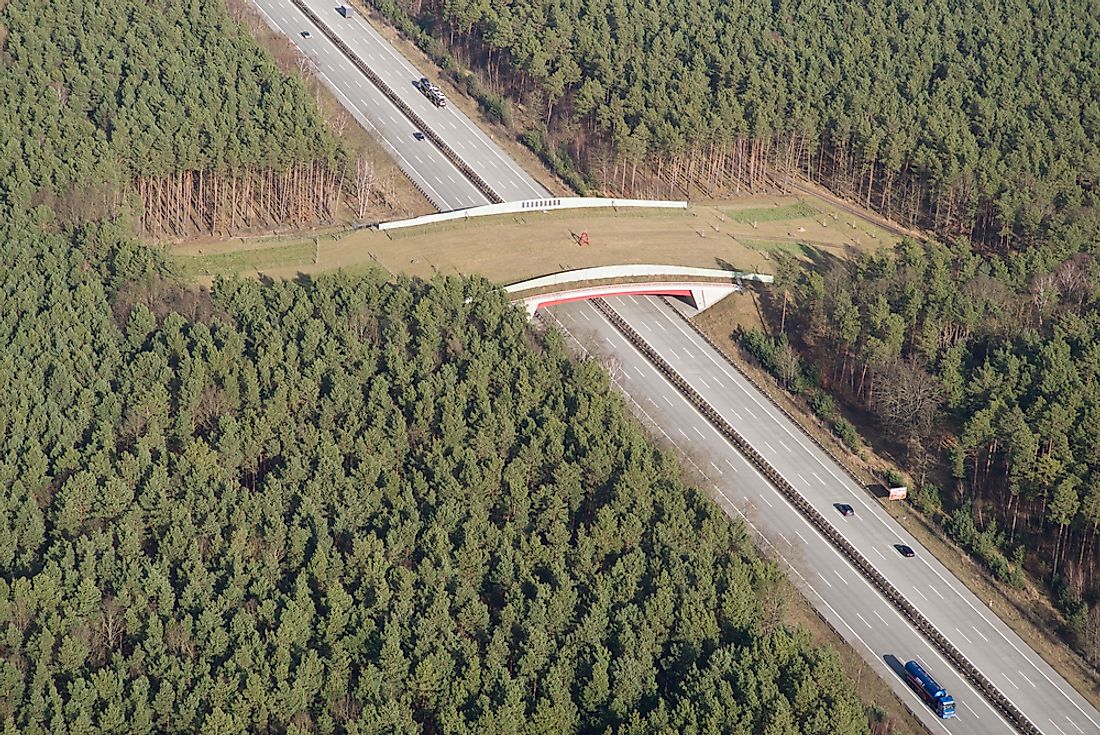What is Habitat Fragmentation?

Habitat fragmentation, also known as species fragmentation, is a process by which large and contiguous habitats get divided into smaller, isolated patches of habitats. The initiation of these smaller habitats has a direct impact on all of the species, their community structure, and the overall ecosystem of those fragments. There are many direct, indirect, natural, and human reasons behind this phenomenon.
Natural Reasons
Habitats can be fragmented because of numerous natural reasons. Out of them, volcanic eruptions, fire, and change in climate are the three major natural factors that lead to the onset of habitat fragmentation.
Human Reasons
Humans are directly responsible for rapid and fast habitat fragmentation. Some of the ways in which humans trigger fragmentation are:
- Urbanization
- Rural development
- Claiming new agricultural lands
- Logging and cutting down forests
- Construction of roads and railway tracks
- Development of housing projects
- Building water reservoirs
All of the factors mentioned above are largely considered the direct causes of habitat fragmentation.
Implementations
Habitat fragmentation is not only responsible for change in the characteristics of a fragment but also causes extinction of many species. To make it simple for you to understand, imagine you woke up on a Sunday and decided to go get your weekly groceries from the supermarket. However, on your way to the market, you found out that a wall has been erected between your home and supermarket. The erection of this wall is going to affect you and your life completely. Next, imagine the same thing happened in many areas of your city, and your city’s population has been divided into smaller and disconnected areas – the obstruction would make survival very difficult, right?
When a contagious habitat faces fragmentation, it triggers the edge effect in these smaller and isolated fragments. The edges of these fragments become less suitable for some or many of the species and organisms. The edges of a habitat are usually the least populated areas, and when that habitat divides into many fragments, they become challenging and competitive areas for their inhabitants. This phenomenon also affects territorial animals to the point of extinction, as their territories shrink down. With that, travelling through one fragment to another becomes dangerous as it involves having to cross roads, rail tracks, and even fences.
Next, extensive fragmentation of a habitat means that its inhabitants will have lesser resources. Apart from that, the inhabitants will also have to deal with challenges like increased competition and a comparatively dangerous place to live in. The battle for survival speeds up as new species travel to the fragments. This results in migration or extinction of many species, which further affects the entire ecosystem of the fragment.
Advantages
While there are many downsides of habitat fragmentation, it has a few advantages too. First, it has the potential to increase diversity as it shapes speciation and evolution. Geographical and reproductive isolation triggered by fragmentation leads to allopatric speciation. Apart from that, it diversifies landscapes as well.
All in all, habitat fragmentation has a few advantages to offer. However, its drawbacks far outweigh its benefits.







